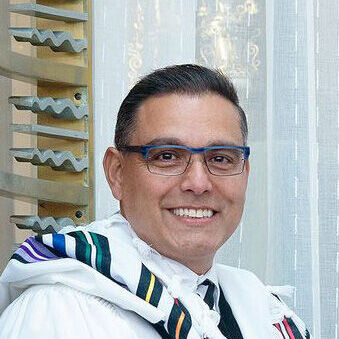Parsha’s choice of words invites deep dive into nuances of communication
Published April 29, 2021
This Shabbat, we will read Parashat Emor from the Book of Leviticus. Like many of the other Parshiot in this Holy Sefer, Emor highlights the special responsibilities and obligations placed upon the Kohanim, the Priestly Class of Ancient Israel.
One of the major questions, which has occupied the attention of our Rabbis for centuries, is why the Torah in this particular Parashah choses to utilize the word “Emor” rather than more common Hebrew word “Vayedaber” when describing the communication between Almighty and Moses and then the subsequent transmittal of God’s message from Moses to his brother, Aaron the High Priest’s progeny, the Kohanim?
As the Torah shares: “The LORD said to Moses: Speak (“Emor”) to the priests, the sons of Aaron, and say to them (“VeAmarta”): None of you shall defile yourself for any [dead] person among your kin.” (Leviticus 21:1)
ADVERTISEMENT

My teacher, Rabbi Lipnick of blessed memory, who celebrated both his 1st and 2nd Bar Mitzvah on Shabbat Parashat Emor, and was a master orator as well as a keen student of Torah, once pointed out to me a Midrash from the collection known as the Tanchuma to Parashat Tzav. This Midrash posits that the difference between these two terms is predominantly a difference in inflection and tonality. It considers the word “VaYedaber” as a harsh or strident way of communicating and “Amar” as a gentler, softer approach to the sharing information.
Thus, the term “Daber” connotes an intentional distancing between the speaker and those being addressed, while “Amar” endeavors to underscore a closeness, a kind of intimacy, between the parties.
Clearly, the relationship between the words “Daber” and “Amar” is complex and nuanced. And this, of course, should come as no surprise to us as the whole arena of communication, which is the cornerstone of all human relationships, is convoluted. Thus, our Torah in its infinite wisdom and its profoundly deep understanding of the human condition, provides us with a series of varied terms to describe our interactions with one another and with our Divine Parent. Each term in our Holy Writ helps us better appreciate the challenges and opportunities presented to us in our quest for healthy, constructive and fruitful interactions.
As we know, we the Jewish People are referred to as a “Kingdom of Priests and a Holy Nation.” Thus, especially in this day and age as we desperately quest for the numinous and the transcendent, each of us is a Kohen. And as such, each of us must consider the best modality in which to share thoughts, ideas, feelings and insight. Moreover, we must communicate to those around us how we need to be communicated with. Whether we employ a “Daber” or an “Amar” modality, let us do so with love, respect and most especially with a sense that we are participants in sacred and holy interactions – with one another and with the Almighty.
With love blessings for a Shabbat Shalom – a Shabbes filled with healthy and productive communication.















